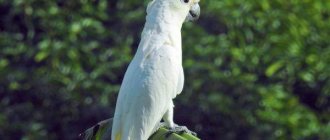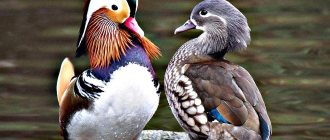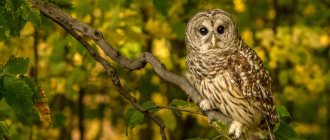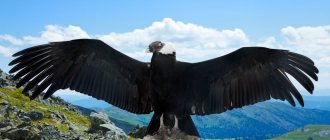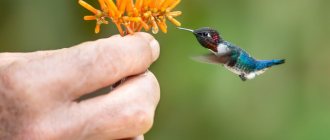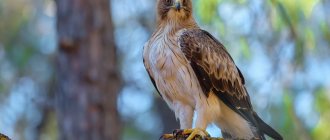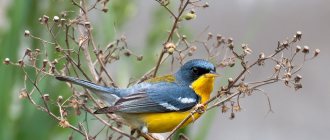Who slept with their eyes open?
Except crocodiles sleep with their eyes open
Dolphins, who make sure not to stray from their group, are able to do this, as do some birds, walruses, beluga whales, fur seals and others.
Interesting materials:
How was Judah of Kiriath killed? How was the state of the Huns created? How to prepare for Ielts quickly and effectively? How to tan quickly and beautifully? How to quickly and easily clean carp? How to quickly save money? How to quickly teach a parrot to talk? How to quickly freshen your breath? How quickly do nails grow? How to quickly unlearn your license?
Why owls shouldn't become larks and why that's good
You feel like you need to wake up much earlier, right?
According to productivity gurus and most self-help books, waking up early gives you the whole morning to yourself—which means you'll have a successful day. But it all starts with discipline. Waking up early is the basis of discipline.
Many successful people actually wake up before dawn.
Apple CEO Tim Cook starts his day at 3:45 am. Oprah gets up before the sun every day. Mark Wahlberg starts his morning workout at 2:30 (!) in the morning.
Among famous writers, the picture is the same: Murakami’s wake-up time was 4 a.m., Benjamin Franklin got out of bed at 5 a.m., and Kurt Vonnegut at 5:30 a.m.
You know all this, you’ve already tried all the tips for waking up early, and still it’s 11:00, and you’re just dragging yourself to the coffee maker.
This is not your fault
And you are not lazy. It is important.
You see, I too participated in the race against the sun and lost every time after several ambitious successes. And to make matters worse, trying to get up early always resulted in terrible insomnia.
If I set myself the task of waking up early, this pressure was enough to keep me awake all night. The next day I was as sluggish and unproductive as ever.
I beat myself up for these “bad habits” for years. Why am I the only one whose body is unable to get out of bed early?
It turns out that this is not my fault.
The answer is provided by chronobiology, a branch of biology that studies cyclical phenomena among living beings.
Each of us belongs to a specific chronotype, which determines when in a 24-hour period we tend to sleep. According to Michael Breus, Ph.D., who specializes in sleep medicine, there are 4 such chronotypes.
Each of them has a certain time of the day (or night) that is most suitable for certain activities. By trying to force yourself into a chronotype that you are not (read: trying to wake up early when you work best later), you are not using your energy and potential optimally.
Who are owls?
According to Breus, in addition to the fact that owls are most active after sunset, these people are often creative and tend to think outside the box.
According to the University of Madrid, evening personality types show higher results in tests of inductive reasoning, which is directly related to innovative thinking. This may be due to the need for owls to find innovative solutions in a world where everything is daytime oriented.
The dark side (literally) of owls
Unfortunately, not only our habits and characteristics are different. It has been found that because the Western world lives largely on a natural cycle of larks (early risers), owls suffer from a form of chronic jet lag accompanied by an increased vulnerability to depression and alcohol and nicotine use.
Even their brains are different—the white matter of owls has been found to be in poorer condition than that of larks.
Additionally, one study examined the relationship between chronotype and morbidity and mortality and found that—regardless of sleep duration—night types were significantly correlated with psychological distress, as well as an increased risk of mortality and various diseases.
However, the most important thing is the likely reason for these alarming results:
The mortality risk of evening types […] may be explained by a chronic discrepancy between internal physiological time and externally imposed time for work and social activity. These findings highlight the need to explore possible interventions aimed at altering circadian rhythms in individuals, or a more flexible approach for night owls regarding working hours.
That is, your suffering is not caused by the fact that you are an owl. The reason is that you are a night owl in a world made for early risers.
How to become a high-functioning night owl in a world designed for early risers
I've been through the roller coaster of the pros and cons of owls pretty much my entire life. Some of my earliest memories (from when I was about 3 years old) are of lying in bed at night and not being able to fall asleep.
Of course, I’m glad that I’m a little eccentric and creative, but it also brought me a lot of suffering. Having to go to school and work led me to adopt the habits of a morning person, which ultimately pushed me into the dark world of insomnia.
Now I no longer believe that waking up is the key to everything, be it discipline, success or achieving goals. I no longer try to remake myself and my body. I accepted myself as an owl. I decided that I needed to change my boundaries, not my bedtime.
If you also feel like an exhausted pigeon in the world of songbirds, I'm sharing what helped me become a high-functioning owl:
Step 1: Accept
The science mentioned above may help you understand yourself better, but you are still far from truly accepting your chronotype.
When I say acceptance, I mean be on your own side. You must forgive yourself for the sleepless nights and late rises. You must agree that you cannot make early appointments.
If you're a morning person, this might sound dramatic, but many night owls (including me) grew up thinking they were lazy and worthless. After all, this is what our parents, teachers, role models, and fellow early risers tell us all the time.
As cliché as it may sound, if you don't accept and believe in your strengths and abilities - no matter when you sleep - no one else will do it for you.
Step 2: Organize
Once you have accepted and forgiven your nocturnal lifestyle, it is time to change your life to best suit your chronotype.
I quit my job and started my own business partly because I felt like waking up early was slowly killing me. However, I know that not everyone can do this. However, you most likely have at least some power over your circumstances and responsibilities, and I urge you to use it.
Here are possible steps (from simple to radical) that will allow you to find harmony between your work, schedule and predisposition. None of them are revolutionary or unheard of, but I want to show that there is always a way out, even if it seems like you are trapped.
If you already have full control of your time (for example, you are self-employed), you can skip the following steps - this is for those whose time is mainly controlled externally (for example, at the workplace).
Talk to your boss, team and other stakeholders
In any case, this step should be the first. You don't need to explain that you are a night owl and what that means to you. Often a simple “I prefer to start and finish work later than most people because that’s how I can be most productive” is enough.
Your boss and colleagues are people too, and as long as you don't miss meetings, show up and do the necessary work, being in the office at slightly different hours shouldn't be a problem.
Make the most of your schedule flexibility
If you have a flexible work schedule, you're already a winner. When I worked in an office, I tried to make the most of flexible hours and started working as late as possible (usually between 9:30 and 11 o'clock).
Sometimes it's hard because most of your colleagues will start work (and get home!) much earlier, but it's worth it to avoid getting up early.
Ask for the opportunity to work from your home office
Depending on where you live, the concept of remote work may either be the most common thing in the world or frowned upon.
Try to agree on at least one day of remote work per week. If your boss is adamant, ask for a trial day or two to prove that working from home can be just as (or even much more) productive.
This way you will save yourself from commuting and the need to come to the office early.
Cross off all the early hours on your calendar.
It won't help you avoid all morning meetings, but a trick that has worked well for me is to simply mark the first 2-3 hours of the workday as busy in your Outlook calendar. When there were meetings that I had to attend, my calendar always showed that I was unavailable in the early hours.
Start your own business
This is what I did after all the above steps. I am my own boss and control my own time, and this fundamentally changes things, although it is accompanied by many other problems.
Nowadays, I often wish that waking up early was my biggest problem, but in the end, freedom of my own time and body is worth all the difficulties.
Don't take a job that you already know isn't right for you.
I know not everyone can afford to be so picky, but if your life allows you to choose, don't take a job that forces you to become a morning person (like an early morning shift).
No one told me to respect my body clock when choosing a job or profession, so I'm telling you this now: it's as important a component as your talents, experience, degree or expected salary.
You have the right to take this into account.
Step 3: Adjust
Once you've set work hours that work for you, it's time to get things done and be productive. Hard work and diligence are not what day birds have staked their claim on.
Here are the steps that helped me become a productive night owl:
Create a morning routine and stick to it
For a long time, I believed that self-care in the morning (or any other time of the day when you wake up) was the privilege of early risers. “Wake up at 7 a.m. so you can journal, do yoga, and meditate. There’s no time for that after 9 a.m.—you’ve already wasted half of it!”
This is nonsense. Just because your life cycle is different doesn't mean you don't have the right to spend the first hours of your day as you wish.
Now, no matter how late I wake up, I follow my morning routine. It helps me set my intentions for the day, feel confident, and perform better.
Your days are not getting shorter and you have no less time to take care of yourself than others. You just do it at a different time.
Use extra night hours
People who wake up at dawn like to boast that they have “an extra hour.” But guess what—there are 24 hours in a day, and if you stay up longer, your “extra hour” starts when the early risers fall asleep.
Owls typically have their peak productivity at night, and you are responsible for using it.
I'm writing this at 11:30 pm - after a fairly leisurely day, my creativity is finally picking up. Realize that your chance to do something isn't lost just because everyone else has already ordered their first margarita.
Find the right workplace
If you have some control over where you work (you can take your work home or you have your own business), find a suitable workplace for the above-mentioned additional hours. If it's a house, great! If, however, you're distracted at home and your partner goes to bed at 11, look for other options.
I like coworking spaces, work cafes or libraries. If you live in a big city, chances are it's all open 24 hours a day, so you can come as late as you like.
Here you can not only enjoy peace and quiet, but also see that you are not the only night owl in town (that is, meet people similar to you).
Plan your day the night before
This is good advice for everyone, but especially for owls. No matter how happy you are with your sleep cycle, some part of you may worry if you start work late.
I decide what I will do tomorrow before I go to bed. Having a roadmap for the day ahead helps reinforce my right to some quiet time after waking up. It also helps me stay on track and not jump from task to task.
Recognize the cost
Being a high-performing night owl comes at a high price. You have to work when others have already finished and are enjoying a well-deserved rest.
This means you can't go to the movies at 6, 7 or even 9 pm. And after a long day, you often won't have any company because everyone is already asleep.
I love Brian Ye's story about how he has been living in a box, waking up at 5am for the past 3 months. The same thing happens when you work and go to bed late. Your routine is different from your friends, and it comes with a price.
The problem is that we night owls often get stuck in an in-between state: we can't get up early, but working late at night also seems weird. This is the time when everyone is having fun, after all.
Well, you'll have to learn to say no to drinking after work and going out with friends during regular evening hours.
Adjust your sleep hours
Nocturnal lifestyle should not be chaotic.
The National Heart, Lung, and Blood Institute found that not maintaining a regular sleep-wake schedule leads to a higher risk of various metabolic disorders.
Consistency is important, even if your bedtime is different from the time most other people sleep.
I'm not a fanatic about sticking to a schedule, but my peak productivity is between 11 and 12:30 a.m., and I go to bed no later than 2:30 a.m.
A few years ago, I rarely went to bed before 3 a.m., which suited me then. I have no scientific evidence, but my personal experience has shown that in the medium term it is enough to be consistent - bedtime can be moved slowly if necessary.
You are not broken
Being an owl isn't easy. Most of the above tips are very subjective and at the end of the day, all I can offer you is research and my personal experience. Even if you can't or don't want to follow any of my advice, at least remember this:
1. You are not alone
No matter how lonely you feel, know this: According to The New York Times, only about 40% of the population are morning people. The rest are either owls or something in between. There are many other people like you.
2. You are not crazy or lazy.
It's your nature and it's scientifically proven.
3. You have options.
Even when you think not. A small change or an extra hour of wakefulness makes a big difference. But you must use these options yourself.
4. You can be productive and successful
It doesn't matter when you go to bed or wake up, it's the consistency of showing up to work and getting things done that matters, not the hours of the day you do it.
Accept yourself for who you are and use it to your advantage. This is a mantra that applies to more than just your sleep and wake patterns.
Source
Interesting article? Subscribe to our Telegram channel to receive more educational content and fresh ideas.
Length of an owl's legs. The owl has legs. Reference especially for those who like to depict owls
in drawings, tattoo designs, sculptures, toys, dolls and other creative impulses with three fingers facing forward. A search on Google brings up a ton of drawings of owls with three-toed feet. People, don't do this! Owls will not respect you for this. It’s especially annoying for people with similar tattoos. Screenshot from Google search
One of the distinctive characteristics of the order of birds Owls is the specific structure of the paws, where two toes point forward, the third to the outside and slightly back, and the fourth to the back. It turns out to be a kind of cross with unequal angles. An owl physically cannot sit on a branch with three toes facing forward; it is not a sparrow or a crow. It is for the order Passeriformes that the three-toed position of the paw is characteristic (three fingers point forward and one back, almost like a hippie symbol of peace).
Owls are not hippies, they are not peaceful, they are predators, they have different legs. These are the footprints of a long-eared owl, for example. https://osledah.ru/sledyi-ptits/ushastaya-sova
And those draftsmen who respond to any remark, “I’m an artist, that’s how I see it,” let them go and get their eyes treated. Because the legs of an owl of a healthy person look completely different from the legs of an artist's owl.
I first posted these photos with similar text on my VK wall. And there arose a dispute that, they say, people learn and have the right to make mistakes. I'm not against it at all, and even for it. It is for this reason that I have personally posted thousands of photographs of owls online; they can be viewed at any time, they are in the public domain. This is precisely why I am paying attention to this now (although not for the first time). I know that many people don’t think about such seemingly small things. But this is not a small thing, this is a serious mistake. When you learn, you are allowed to make mistakes. But when you receive money for your work (here we are talking about all sorts of prints, sales of paintings, mass replication), it turns out that the consumer receives a low-quality product. And no, this is not stylization. This is an error approximately equivalent to if a wolf was drawn with a tail curled into a ring, like a husky’s. Therefore, mistakes must not only be corrected, but also prevented.
And advice for those who want a tattoo with an owl: do not be fooled by the provocations of obscurantists - TWO fingers, not three! And you will have respect, admiration and immunity from a special cauldron prepared in hell for three-fingered people.
Do owls sleep in winter or not? Anatomical features
Owls in their anatomical characteristics differ from diurnal predators and therefore stand out as an independent order.
The features of the skeleton of owls include: the existence of processes of the main bone, a peculiar triple articulation of the lower jaw with the skull, very short phalanges of the third finger, mobility of the outer finger, which can bend backward, and finally, the existence in most species (barn owls are an exception) of a notch on the posterior edge of the thoracic bones. Five rows of stiffer, expanded feathers form a radiant corolla, the so-called facial disc. The flight feathers of the wide wings are wide, rounded at the ends and curved towards the body; the outer webs of the first three feathers are often fringed or saw-toothed, which allows the owl to fly almost silently; the third and fourth feathers are longer than the others. The tail feathers of a trimmed or rounded, usually short tail are also curved towards the bottom. The legs are usually feathered to the base. Their sharp long claws are strongly curved. The owl's beak, which curves from the very base, does not have any notches at the edges and ends in a short hook, with the help of which owls can make a characteristic clicking sound, expressing strong excitement or irritation. The short cere is always covered with bristly feathers.
The eyes of owls are very large and look straight ahead, corresponding to the position of the eye sockets on the front side of the facial parts of the skull, that is, an owl cannot move its eyes like a person. The eyes of owls remain motionless throughout their lives. The world for owls appears black and white. Contrary to popular belief that owls cannot see anything during the day, owls' eyes are not so sensitive to daylight; The eagle owl, for example, sees perfectly during the day even at a great distance. The pupil of owls greatly narrows and dilates not only with changes in lighting, but also with each inhalation and exhalation. Both the vision and hearing of owls are extremely delicate. It is almost four times thinner than a cat's. The outer ear is relatively large and can be covered with a movable fold of skin feathered on the outside; radiant feathers sitting around the ear openings form, as it were, the outer shell of the ear.
Owls can turn their heads 270° without harm due to a number of adaptations. Firstly, the carotid arteries of owls in the area of the lower jaw bone have a balloon-like expansion, creating a supply of blood in case the blood supply “from below” is reduced during a sharp turn. Because of this feature, the network of small blood vessels branching from the main arteries is enlarged, which facilitates the delivery of blood to the brain. Secondly, so that the blood vessels are not compressed in their corresponding holes in the cervical vertebrae when turning the head, these holes are approximately 10 times wider than the diameter of the arteries passing through them. Thirdly, the carotid arteries are connected to the vertebral by special anastomotic bridges in case the carotid arteries are strongly compressed when turning.
Most owls are dull colored; usually black spots, stripes and speckles are more or less densely scattered over the main gray or rusty background; but this coloring of owls always harmonizes with the surrounding background and completely hides them at dusk.
.
Natural enemies
The golden eagle is a predator capable of attacking owls.
Natural enemies of owls include larger birds that lead a predatory lifestyle.
Among them are golden eagles, hawks and eagles. Thanks to their massive body and sharp beak, they easily win the fight and eat their prey. Interesting fact : the main problem for a predator is not enemies, but the lack of food.
In many areas, there are not enough animals and birds that are part of the owls’ diet, so approximately 25% of them go to the next world due to hunger. Chicks have their own natural enemies. If an owlet falls out of its nest, it is likely to be eaten by a carnivore living in these areas. These include fox, raccoon and ferret.
Humans have a detrimental effect on owls. Every year large volumes of forests are cut down, which is why different species are forced to leave their usual territories and go in search of new ones. The gradual deterioration of the environmental situation also has a detrimental effect on the bird population. And in some regions, different types of owls are even hunted.
The main problem is the work schedule
Although flexible working is becoming more common, employers still favor early risers and are unhappy with those who start work in the afternoon.
Read also: What to wear with pink skirts
Night owls who work remotely often prefer to hide their late rises. To do this, they resort to various tricks, for example, writing letters at night and scheduling them to be sent in the morning.
In addition, not all specialties allow you to work on a flexible schedule. Most owls are forced to work according to the traditional schedule from 9 a.m. to 5 p.m.
Varieties of owl. Description of popular varieties of forest owls
Most owls prefer to live in or near forests, feeding on rodents and small birds. However, their diet often also includes reptiles. It is worth briefly talking about the most interesting and famous species of forest owls.
Barn owl or barn owl
One of the most common birds in the family, it can be seen on any continent, with the exception of Antarctica. Their hearing is simply excellent - even better than that of cats.
At the same time, the barn owl cannot boast of large size - its body length rarely exceeds 40 centimeters. The color is quite attractive - red with dark streaks. They are easy to recognize by their characteristic facial disc - it is heart-shaped.
Hawk owl
Unlike many other owls, it hunts equally effectively both at night and during the day. It is similar in flight to a hawk, which is why it got its unusual name.
Birds are on average quite large - body length ranges from 35 to 40 centimeters. Can be found in North America, as well as mixed and coniferous forests of Eurasia.
Great Gray Owl
Gray owl chick
A severe bird that lives mainly in northern latitudes, inhabiting almost all the forests of Europe and North America. The head is quite large, the facial disc is clearly defined.
The bearded owl looks quite elegant - the plumage is brown-gray, there is a white collar on the neck, and a dark spot is located directly under the beak. It looks like a beard, because of which the bird takes on a very sophisticated, even aristocratic appearance.
Great Horned Owl
But this bird is found only in Latin America - mainly in the forests and plains of Costa Rica and Mexico. The horned owl owes its name to its light eyebrows - they extend to the ear tufts, consisting of white feathers, and together they really resemble horns.
The color is gray-brown, decorated with stripes and spots for better camouflage. An interesting feature is the paws - feathers cover them almost entirely.
Long eared owl
It lives in a fairly limited area - only in Europe, as well as in northern Asia, although it prefers to winter in the northern part of Africa. The size is quite compact - with a body length of 30-35 cm, the wingspan reaches 100 cm. The diet consists mainly of birds, insects and rodents.
It got its name because of the prominent ear tufts located on the head - each consisting of six feathers.
Common cutworm
The common cutworm is known even to children
Another name for the bird is Scops Owl. As mentioned above, it is very compact - the body length rarely reaches 25 cm. They are found in almost all regions of Russia - from the European part to the Urals and Siberia. In addition, you can see it in Central Asia.
The color of the plumage is gray-brown with black and white splashes. There are both sedentary and migratory individuals. The latter - usually natives of the northern regions - spend the winter in Africa.
For reference! It got its name because of its characteristic, very melodic voice - at night the birds repeat “sleep-yu-yu!” every few seconds.
Great Sparrow Owl
Small pichugas with a wingspan of only 40 cm. The tail part is elongated, but the facial disc is poorly developed. There are no ears, and small eyes peek out from under white eyebrows. The paws are covered with short, fluffy feathers up to the claws.
Excellent hunting both during the day and at night. An interesting feature is that, unlike most of its relatives, it makes reserves, hiding its prey in hollows.
